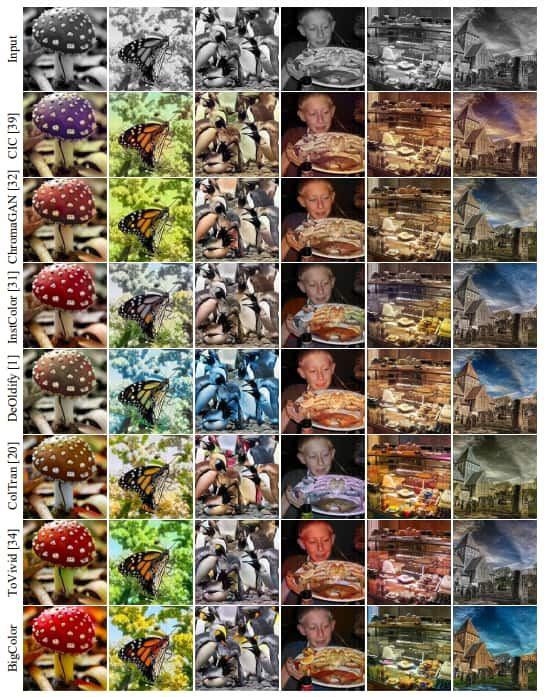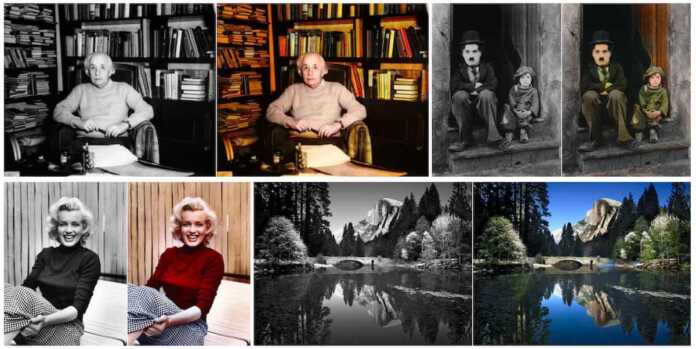The colorization of images through AI is a resource that today allows you to give a new life to those photographs that were originally captured in black and white.
Although there are already solutions that are at our fingertips, those and even other more complex models, usually offer saturated or desaturated results, with colors that do not always look realistic. A new project, jointly developed by researchers from Postech (Pohang University of Science and Technology, South Korea) and Samsung Electronics, offers an alternative with superior results.
A new AI tool to colorize monochrome images with realistic results
The mosaic that accompanies this note, in which you can see Albert Einstein at Princeton University, Charles Chaplin in a scene from the 1921 film “The Boy”, Marilyn Monroe and a Yosemite postcard, captured by Ansel Adams; they appear in their original version, accompanied by their version processed by BigColor, the tool developed by researchers from Postech and Samsung.
The purpose behind the development of this project is to obtain realistic results, with vivid and natural colors, for use in natural images with complex structures.
The need to explore this alternative lies in the fact that conventional methods have several limitations to perform effective colorization. One of the first weaknesses to be reinforced is that existing technologies do not always work properly with color palettes, influencing the quality of the results obtained. Another of the common difficulties with these tools is that their operation is limited to working with fixed resolutions, requiring the adjustment of the images to be processed to the required dimensions.
Overcoming these technical difficulties, BigColor offers the ability to color complex images with vivid palettes and arbitrary resolutions. The model was the subject of several tests, standing out over other reference AI models, also dedicated to this same task.

In the first row, the images subjected to the comparative tests are presented. In the following rows, the results obtained with the colorization models used as a comparative reference are displayed. In the last row, the results obtained with BigColor appear. Font: Archive.org
While the pre-existing generative models were trained to synthesize image structures and colors, in the case of BigColor the system learns a generative color (range or palette of colors) before focusing on color synthesis, looking at the spatial structure of an image.
This way of working makes it possible to reduce the load associated with the task of synthesizing image structures, based on other previously processed images, also controlling their representation space. In other words, this system can deal more efficiently with the colorization of several consecutive images, taken in similar planes, as in the case of the frames of a black and white movie scene.
The proposal presented was released for the time being as a research project. In the paper of the study, more details about this interesting proposal can be known. Among other technical aspects, it is highlighted that the BigColor artificial intelligence system, which is an encoder-generator network, was developed taking as inspiration BigGAN, which is another AI system, a type of generative adversarial network, which was designed to scale generation to high resolution and high fidelity images.














